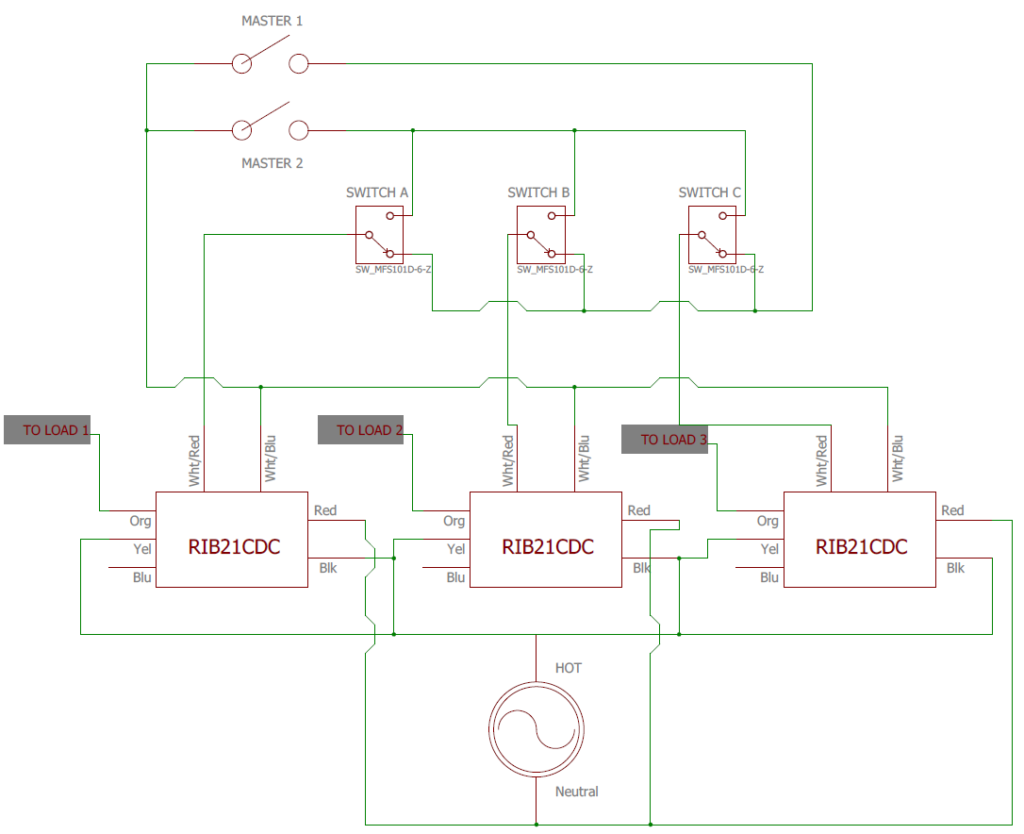One Switch to Rule Them All

One switch to rule them all, one switch to find them, one switch to bring them all and in the darkness bind them. I hope you enjoyed that little LOTR reference. As you can probably guess from the title, on this Tech Tuesday I’m going to talk about master switches. The concept of the master switch has been around for a while – nothing new here. Whether it’s for simply forcing lights on in a building, or a conveniently-placed plot device in almost every sci-fi movie ever, we all know a master switch can be useful in a large assortment of applications. What many people don’t know, however, is that you can place your very own master switch with any of our dry contact input relays.
Using Dry Contact Relays to Create a Master Switch
Our dry contact relays work by monitoring the input for a contact closure; no voltage is needed at the input. So, all you really need to wire this up is our dry contact input relays and some switches. These switches don’t need to be big either, even our small 5A rated SIBLS would be overkill for this application. The key to wiring it up correctly is making sure the Blue/White wires on the dry contact input of all the relays are wired together. So, without further delay, here is the wiring diagram for it:

To gain a better understanding of how this functions, take a look at this table:

No, not that table….
This table!

If it helps, think of these two master switches as an HOA switch. With both switches open, all loads are forced off. With both switches closed, all loads are forced on. If the master switches are opposite of each other, the load switches will toggle the loads. Please note that while this diagram uses three dry contact input relays, you can expand it to use even more. I have personally tested this setup to include seven. You aren’t limited to using the RIB21CDC either, any of our relays with a dry contact input can be wired this way.
There you have it. The master switch(es). Since the dry contact inputs are low voltage, you can use just about anything in place of a switch. Our current sensors work great, as well as our relays. You could even just use the dry contact input wires. So be creative with it and remember to give us a call here at support if you have any questions.
